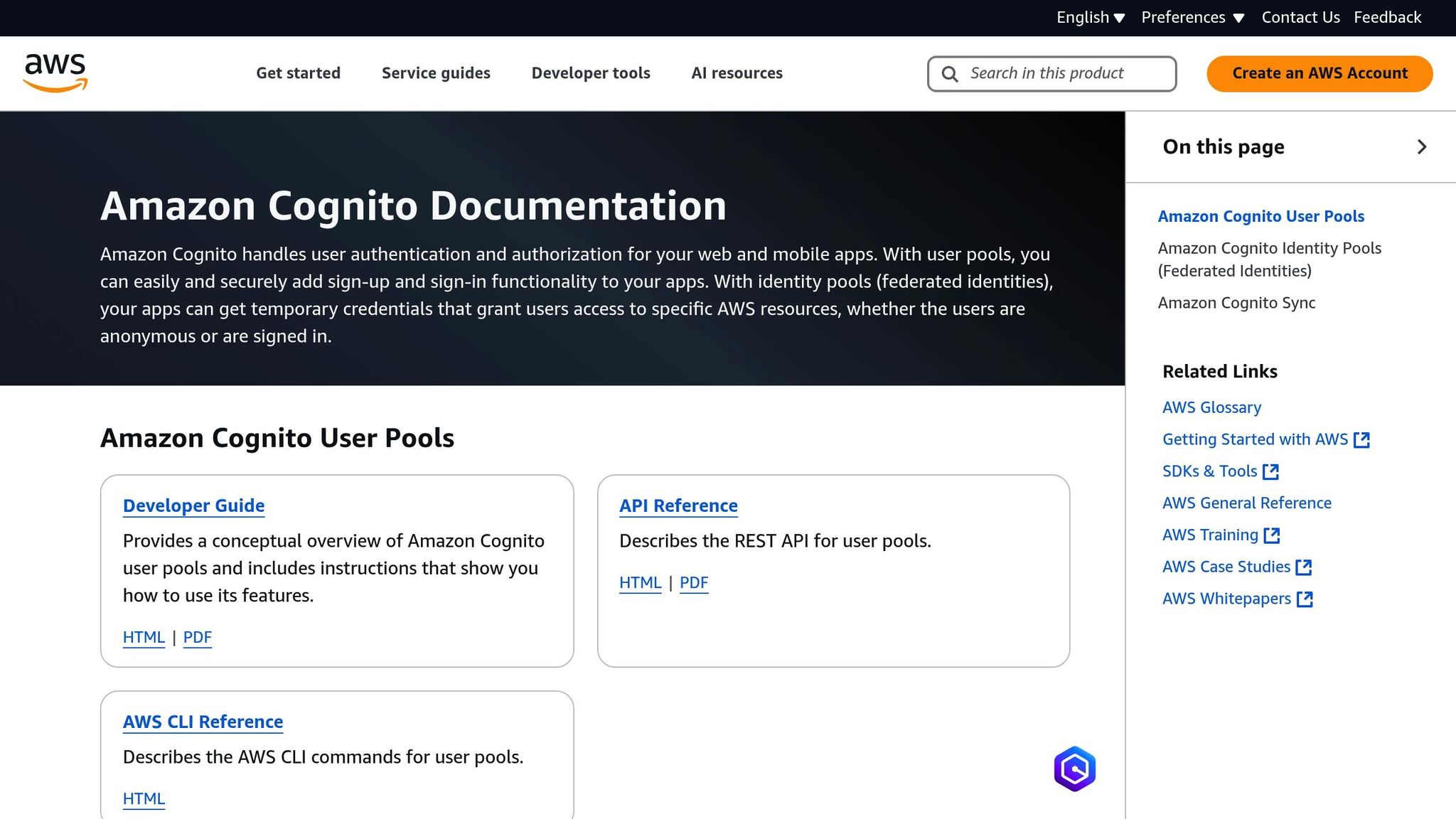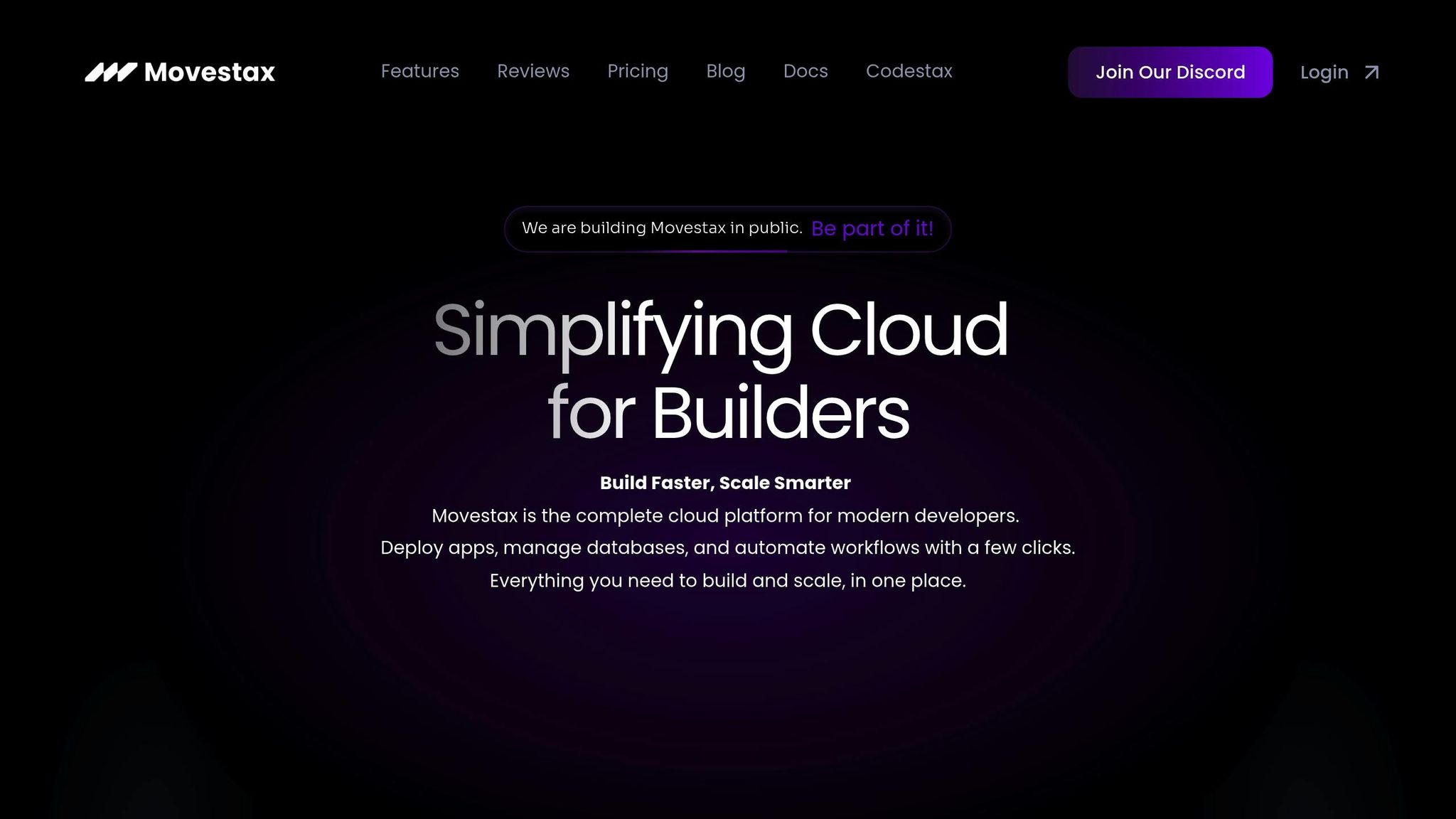Securing serverless apps with Multi-Factor Authentication (MFA) can be challenging but essential. Here's what you need to know:
Why MFA Matters: Protects sensitive data by adding extra authentication layers, reducing risks from stolen credentials.
Key Challenges:
Stateless nature of serverless functions complicates session management.
MFA can slow performance if not optimized.
Balancing security with user experience is critical.
Solutions:
Use external state management (e.g., databases, caching systems).
Choose the right MFA method (e.g., TOTP, push notifications).
Securely store secrets using encryption and managed services.
Monitor authentication events for suspicious activity.
Quick Comparison of MFA Methods
MFA Method | Security Level | User Experience | Implementation Complexity | Best Use Case |
|---|---|---|---|---|
TOTP Apps | High | Good | Medium | Most apps |
Push Notifications | Very High | Excellent | High | Enterprise apps |
Hardware Keys | Highest | Good | Medium | High-security environments |
SMS OTP | Medium-Low | Good | Low | Legacy systems |
Email OTP | Medium | Fair | Low | Backup authentication |
Pro Tip: Modern tools like Movestax simplify MFA integration in serverless systems, offering built-in authentication, token management, and monitoring features.
Start now: Secure your serverless apps with scalable, efficient MFA setups that prioritize both security and performance.
AWS Cognito MFA TOTP using Google Authenticator + React ...

MFA Design Basics for Serverless
Designing Multi-Factor Authentication (MFA) for serverless systems requires careful planning to address their stateless nature while ensuring strong security. The goal is to create an authentication flow that is reliable, efficient, and user-friendly without sacrificing performance.
Building for Stateless Systems
Serverless functions are stateless, meaning they don't retain information between executions. To handle authentication in such environments, external storage solutions are crucial for managing sessions and states.
Key Components for MFA in Stateless Systems
External State Management: Use managed databases to store authentication data. This ensures MFA verification states persist across function calls securely and efficiently.
Component | Purpose | Implementation Approach |
|---|---|---|
Session Storage | Tracks MFA verification status | Managed database (e.g., PostgreSQL, MongoDB) |
Token Management | Manages temporary MFA tokens | Distributed caching system |
State Validation | Verifies authentication status | Stateless JWT tokens |
Performance Optimization: Minimize delays by:
Validating tokens efficiently.
Employing effective caching systems.
Streamlining database queries.
Once these foundations are in place, the next step is selecting MFA methods that align with stateless system requirements.
Picking the Right MFA Methods
Choosing the right MFA methods involves balancing security, user convenience, and technical challenges. Different methods interact with stateless systems in unique ways.
Common MFA Options for Serverless Apps
Method | Advantages | Technical Considerations |
|---|---|---|
Time-based OTP | Low latency, works offline | Requires secure secret storage |
Push Notifications | User-friendly, secure | Relies on dependable message delivery |
SMS Authentication | Widely used | Needs additional service integration |
Biometric Verification | High security | Depends on device capabilities |
Key Factors to Consider
Scalability
Ensure your MFA solution scales seamlessly with your serverless architecture. The chosen methods should handle spikes in authentication requests without impacting performance.
Integration Ease
Opt for MFA methods that easily integrate into your existing serverless setup. For instance, Movestax simplifies user management with built-in authentication features.
Security Measures
Use managed databases to securely store MFA-related data. This protects sensitive information while keeping it accessible for serverless functions.
MFA Setup Guidelines
Securely implement MFA in a serverless environment by balancing protection and user convenience.
Secret Storage Best Practices
Keeping MFA secrets secure is critical. The goal is to safeguard sensitive data while ensuring it’s accessible for quick verification.
Key Storage Requirements
Storage Component | Security Measure | Implementation Method |
|---|---|---|
TOTP Seeds | Encryption at rest | Hardware Security Module (HSM) |
Backup Codes | Managed database with built-in encryption | Secure key management service |
Session Tokens | Temporary storage | In-memory cache with TTL |
Recovery Keys | Encrypted storage | Secure key management service |
Leverage managed services that handle encryption and key rotation automatically. This reduces exposure risks while ensuring high availability for serverless functions.
Working with Identity Providers
Identity providers are the backbone of any MFA setup. Secure connections and scalability are essential when integrating them into a serverless environment.
Integration Steps
Configure Identity Service
Set up secure communication channels, define token validation rules, and implement rate limiting.
Implement Token Management
Configure token expiration times.
Enable refresh token rotation.
Use secure storage for tokens.
Enable MFA Enrollment
Build user-friendly enrollment workflows.
Provide backup authentication options.
Establish recovery procedures.
Movestax's built-in authentication system simplifies this process with pre-configured identity management tools that integrate seamlessly into your infrastructure. Once integrated, monitor MFA events closely to detect threats promptly.
Tracking Auth Events
Monitoring MFA events is essential for identifying security issues and resolving them quickly.
Essential Monitoring Points
Event Type | Tracking Details | Action Required |
|---|---|---|
MFA Enrollment | User ID, timestamp, method | Log and notify admin |
Failed Attempts | IP address, device info | Alert after reaching a threshold |
Method Changes | Old/new method details | Require reverification |
Recovery Actions | Request source, validator | Manual review process |
Set up automated alerts to flag suspicious activity, such as:
Multiple failed attempts from the same IP.
Unusual geographic access patterns.
Rapid switching between authentication methods.
Simultaneous access attempts from different locations.
Your monitoring system should scale effortlessly with your serverless applications to maintain security and reliability.
MFA Tools for Serverless Apps
Tools Built for MFA in Serverless Environments
Using the right tools can help you implement MFA without compromising security or performance.
Key Features to Look For
Feature | Purpose | Focus for Implementation |
|---|---|---|
Identity Management | Authenticate users | Includes built-in MFA support |
Session Handling | Manage user sessions after login | Token management compatible with serverless setups |
Event Tracking | Keep tabs on authentication activities | Real-time alerts and logging |
Recovery Options | Support account recovery scenarios | Secure backup authentication methods |
Movestax is developing an authentication system tailored for serverless environments. It offers built-in MFA features that seamlessly integrate with serverless functions and databases. This eliminates the need to manage separate authentication services, simplifying the process.
How to Integrate MFA in Serverless Apps
When adding MFA to serverless applications, it's important to design authentication flows that don’t rely on maintaining state. Here's a basic structure:
Authentication Flow
Authenticate: Validate user credentials and initiate an MFA challenge.
Verify: Confirm the MFA token, issue a session, and set an expiration time.
Manage Sessions: Handle token refreshes, monitor activity, and track events.
This flow aligns perfectly with Movestax's tools, making it easier to implement and maintain MFA.
Setting Up MFA with Movestax

Movestax follows the stateless design principles discussed earlier, making MFA integration simple and efficient. The platform combines core authentication, serverless functions, and secure storage into one cohesive system.
Features of Movestax
Feature | Benefit | Implementation Details |
|---|---|---|
Built-in Authentication | Simplifies user management | Includes native MFA options |
Serverless Functions | Automates authentication processes | Event-driven MFA verification |
Managed Databases | Protects sensitive data | Encrypts MFA secrets and tokens |
Unified Platform | Simplifies security management | Seamlessly connects authentication, functions, and storage |
Upcoming features in Movestax's authentication system will include:
Support for multiple authentication factors
Built-in session management
Automated backup authentication methods
Real-time monitoring of authentication activities
This all-in-one solution enhances security while maintaining the flexibility serverless applications require.
MFA Security and Risk Management
Common MFA Security Issues
Implementing MFA in serverless environments comes with challenges like token replay, timing attacks, and insecure storage. Here's how to address these issues:
Preventing Token Replay
Use time-based, single-use token validation to avoid replay attacks. Movestax's system simplifies token tracking while maintaining scalability in serverless setups.
Protecting Against Timing Attacks
Employ constant-time comparisons for validating MFA codes. This approach minimizes vulnerabilities and complements the strengths of various MFA methods, as outlined below.
MFA Method Comparison
Each MFA method offers a unique balance of security, user experience, and implementation complexity, especially in serverless settings. Here's a breakdown:
MFA Method | Security Level | User Experience | Implementation Complexity | Best Use Case |
|---|---|---|---|---|
TOTP Apps | High | Good | Medium | Default choice for most apps |
Push Notifications | Very High | Superior | High | Enterprise applications |
Hardware Keys | Highest | Good | Medium | High-security environments |
Email OTP | Medium | Fair | Low | Backup authentication |
SMS OTP | Medium-Low | Good | Low | Legacy systems |
The next section focuses on securely delivering these MFA methods in serverless environments.
Safe MFA Delivery Methods
Movestax's authentication system simplifies secure MFA delivery, ensuring reliability and scalability.
Recommended Delivery Approaches
Use TOTP for offline verification.
Leverage serverless functions for push notifications.
Set up secure fallback options to maintain user access during disruptions.
Tips to Strengthen Security
Add rate limiting to prevent brute-force attacks on MFA attempts.
Use encrypted communication channels for all MFA-related data.
Store MFA secrets in managed, secure databases.
Continuously monitor authentication activity to identify suspicious behavior.
Movestax's integrated platform combines built-in authentication and automated serverless functions, offering strong security while reducing the complexity of managing MFA systems.
Conclusion
Key Takeaways
Setting up MFA in serverless architectures requires finding the right balance between security and ease of use. By following the design principles, tools, and practices discussed earlier, organizations can build authentication systems that are both secure and scalable.
Core Implementation Needs
For secure MFA in serverless environments, focus on:
Token management and validation
Secure secret storage
Scalable authentication workflows
These align directly with the secret storage and identity provider integration strategies covered earlier.
Simplified Platform Integration
Modern platforms make MFA setup easier than ever. For instance, Movestax's built-in authentication system helps reduce setup complexity while maintaining strong security. As Craig Schleifer (@bytebuster777) puts it:
"Movestax just simplified my app deployment workflow to minutes. Gone are the days of wrestling with infra setups. Loving the platform so far!"
Enhanced Developer Experience
Integrated MFA tools are also boosting deployment efficiency. Justin Dias (@pixelGenius) shares his experience:
"Shoutout to @Movestax for being the ultimate builder's toolkit. Deployed my app, set up Redis, and automated workflows all in one place. Efficiency overload."
Advancing Authentication Systems
These advancements are shaping the future of MFA with features like:
Built-in authentication tools
Automated deployment workflows
Unified management dashboards
Integrated security monitoring
FAQs
What are the best practices for implementing Multi-Factor Authentication (MFA) in serverless applications to ensure security and performance?
To implement Multi-Factor Authentication (MFA) effectively in a serverless architecture, focus on balancing security with performance. Here are some best practices:
Use lightweight MFA methods: Opt for simpler, token-based approaches like TOTP (Time-based One-Time Passwords) or push notifications to reduce latency.
Leverage managed services: Serverless platforms often integrate with identity providers like AWS Cognito or Auth0, which streamline MFA implementation while maintaining scalability.
Minimize cold starts: Ensure your serverless functions are optimized to reduce cold start delays, which can impact user experience during authentication.
Additionally, consider a platform like Movestax, which simplifies serverless application management and integrates well with secure authentication workflows. By designing your MFA implementation with scalability and efficiency in mind, you can maintain robust security without compromising performance.
How can MFA secrets be securely stored in a stateless serverless environment?
In a stateless serverless environment, securely storing MFA secrets requires careful consideration to maintain both security and scalability. Since serverless architectures are inherently stateless, you should avoid storing secrets directly in the application or ephemeral storage.
Instead, use a dedicated secrets management solution such as AWS Secrets Manager, Azure Key Vault, or Google Secret Manager, which are designed to securely store and retrieve sensitive data. These tools integrate seamlessly with serverless services and provide features like encryption, access control, and automatic rotation.
Additionally, ensure that access to these secrets is tightly controlled using fine-grained IAM policies. This minimizes the risk of unauthorized access while maintaining the flexibility and efficiency of your serverless application.
How does Movestax make it easier to implement MFA in serverless applications?
Movestax simplifies the integration of Multi-Factor Authentication (MFA) in serverless applications by providing a developer-friendly platform with built-in tools and features. Its intuitive interface streamlines the process of adding authentication layers, ensuring secure access to your applications without unnecessary complexity.
With upcoming features like built-in authentication and serverless functions, Movestax is designed to help developers implement robust security measures like MFA while focusing on building and scaling their applications. This approach reduces the need for manual setup, saving time and effort while enhancing security.







